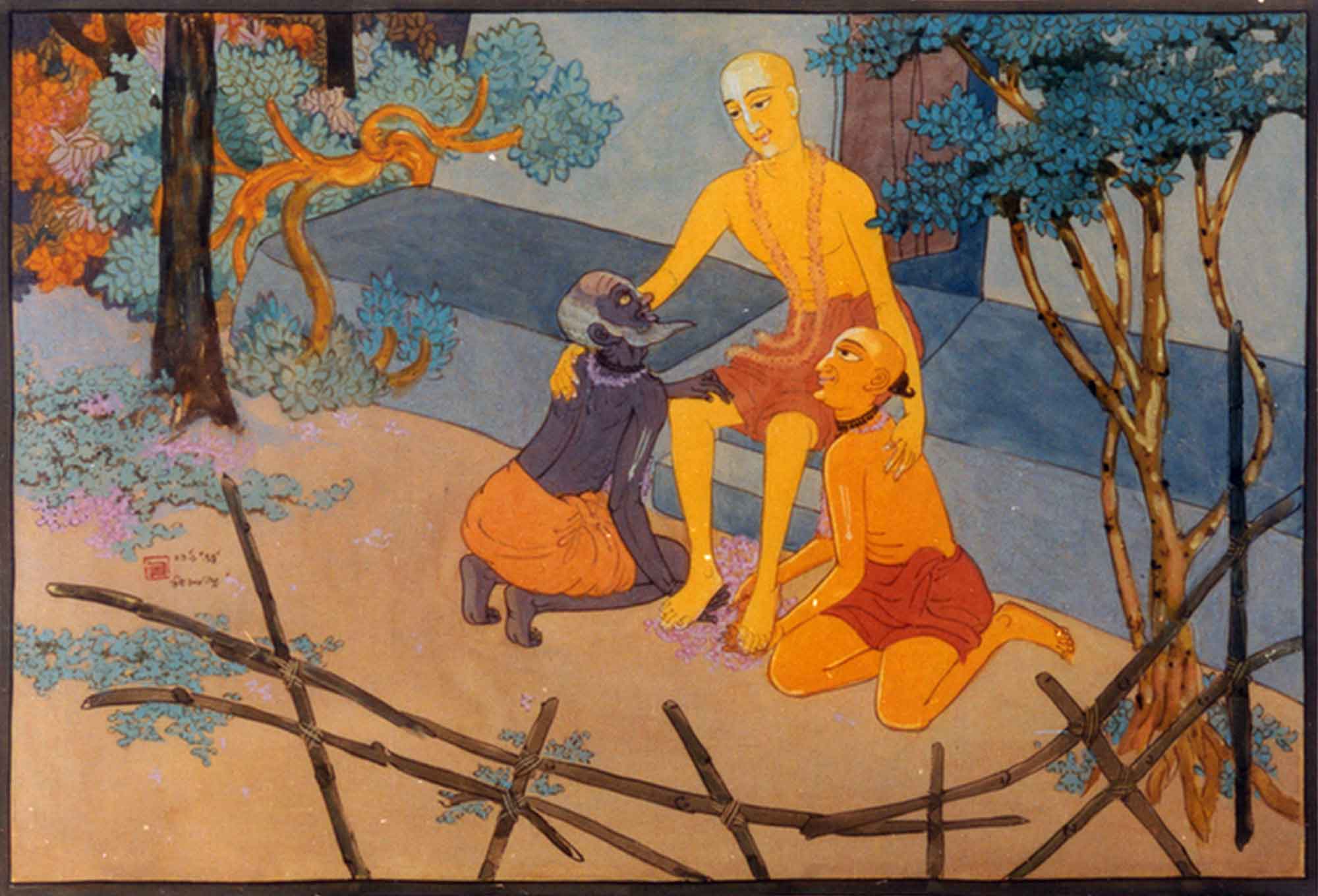Overview
Samālocanā (A Critique of the book 'Vanamālā') was first published in Sajjana Toṣaṇi, Vol.1 in 1881. In this short book review, Bhaktivinoda Ṭhākura warns his readers about mixing jñāna with bhakti.
(translated by Swami B.V. Giri)
Vanamālā – Śrī Chiranjiva Sharma has written this spiritual padyāvalī (an anthology of verses). Printed on a press, the book costs 4 Annas, and is complete with 58 pages.
We have read many parts of this book. The verses are composed in new metres. There is some depth, but it is not sweet. The book is written about the Supreme Lord, but the author has given no sign of any bhakti. There is hari-nāma in almost all the verses, but the unfortunate thing is that the pursuit of knowledge is so prevalent everywhere, that not even a trace of pure prema can be found. Hari-bhakti must naturally be devoid of any trace of karma, jñāna etc. Wherever karma or jñāna dominate, bhakti disappears from there. Only pure devotees of Hari can understand how far the following verse goes against bhakti:
bhautika padārtha jīva-deha bheda kari
paśe viśvāsīra cakṣu brahma rūpā-dhare
dekhe se sarvatra cidānandera laharī
kona vyavadhāna tathā tiṣṭibāre nā-re
(“One Distinguishes the body of the jīva to be comprised of material elements, then the eye of one with faith beholds the form of Brahman. Seeing Him, he feels waves of divine bliss, understanding that there is no division between them.”)
This sort of thing is seen in many verses. It is clear that the author has no realisation of bhakti-rasa, especially after discussing the Karma Śāstra, Jñāna Śastra and Bhakti Śāstra. Although the phrase, viśvāsīra cakṣu (‘the eye of one with faith’) may be understood as coming from a theistic intelligence, this verse is not consistent everywhere else. Kona vyavadhāna tathā tiṣṭibāre nāre (‘There is no division between them’) – it seems that by applying such a phrase, the specific eternal distance between the jīva and Brahman will also be removed. If that is so, then Advaitavāda, which is opposed to bhakti-tattva, becomes victorious.













